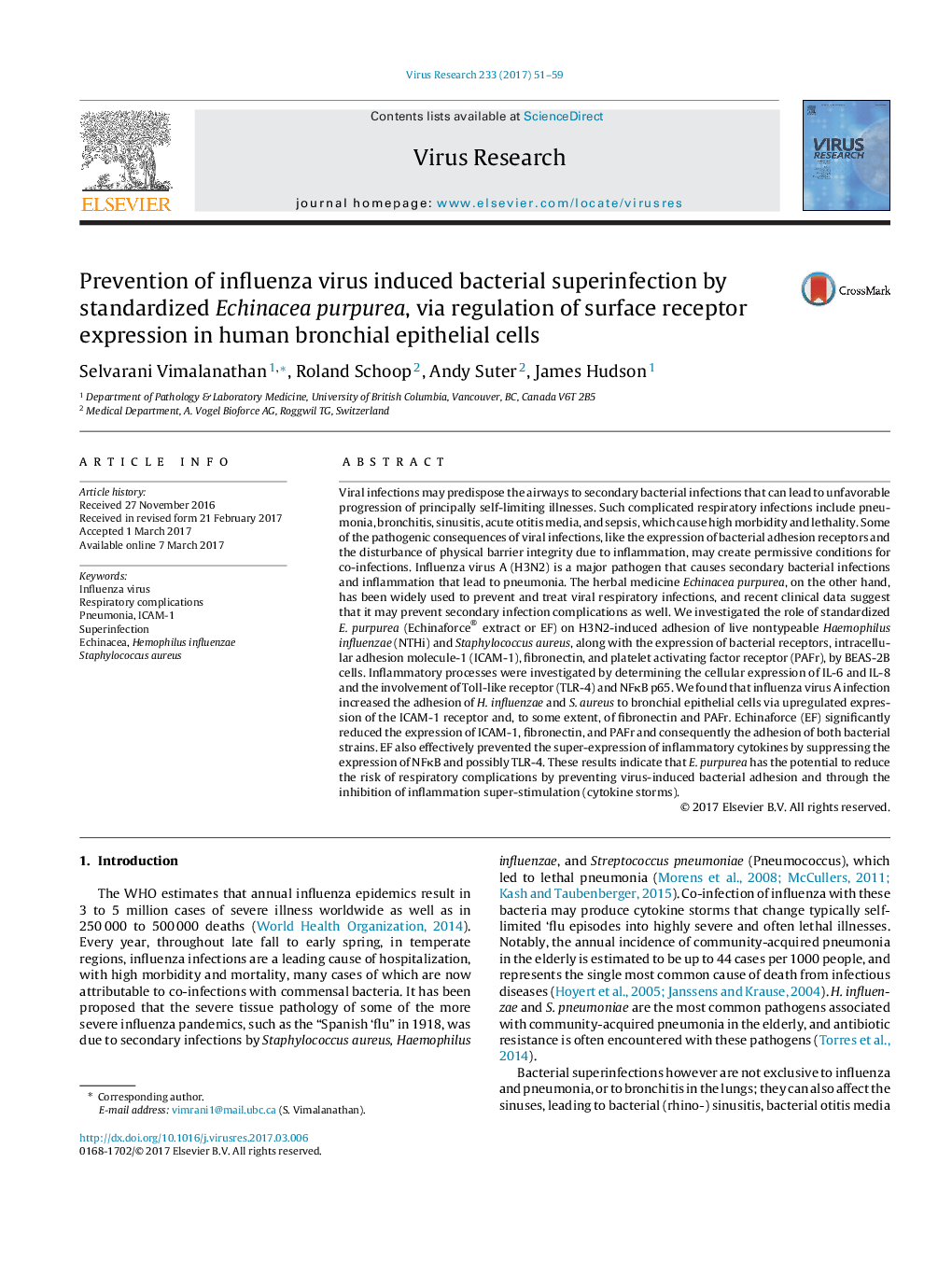| کد مقاله | کد نشریه | سال انتشار | مقاله انگلیسی | نسخه تمام متن |
|---|---|---|---|---|
| 5675541 | 1594324 | 2017 | 9 صفحه PDF | دانلود رایگان |

- Influenza virus A (H3N2) up regulates the expression of bacterial receptors as a result facilitates the bacterial adherence.
- Secondary bacterial infection changes mild influenza symptom into severe respiratory complications like pneumonia.
- Echinacea prevents induction of bacterial receptors ICAM-1, PAFr and fibronectin upon influenza virus infection.
- Echinacea reverses expression of TLR-4 and consequently the super-induction of inflammation.
- Respiratory complications may be prevented by Echinacea.
Viral infections may predispose the airways to secondary bacterial infections that can lead to unfavorable progression of principally self-limiting illnesses. Such complicated respiratory infections include pneumonia, bronchitis, sinusitis, acute otitis media, and sepsis, which cause high morbidity and lethality. Some of the pathogenic consequences of viral infections, like the expression of bacterial adhesion receptors and the disturbance of physical barrier integrity due to inflammation, may create permissive conditions for co-infections. Influenza virus A (H3N2) is a major pathogen that causes secondary bacterial infections and inflammation that lead to pneumonia. The herbal medicine Echinacea purpurea, on the other hand, has been widely used to prevent and treat viral respiratory infections, and recent clinical data suggest that it may prevent secondary infection complications as well. We investigated the role of standardized E. purpurea (Echinaforce® extract or EF) on H3N2-induced adhesion of live nontypeable Haemophilus influenzae (NTHi) and Staphylococcus aureus, along with the expression of bacterial receptors, intracellular adhesion molecule-1 (ICAM-1), fibronectin, and platelet activating factor receptor (PAFr), by BEAS-2B cells. Inflammatory processes were investigated by determining the cellular expression of IL-6 and IL-8 and the involvement of Toll-like receptor (TLR-4) and NFκB p65. We found that influenza virus A infection increased the adhesion of H. influenzae and S. aureus to bronchial epithelial cells via upregulated expression of the ICAM-1 receptor and, to some extent, of fibronectin and PAFr. Echinaforce (EF) significantly reduced the expression of ICAM-1, fibronectin, and PAFr and consequently the adhesion of both bacterial strains. EF also effectively prevented the super-expression of inflammatory cytokines by suppressing the expression of NFκB and possibly TLR-4. These results indicate that E. purpurea has the potential to reduce the risk of respiratory complications by preventing virus-induced bacterial adhesion and through the inhibition of inflammation super-stimulation (cytokine storms).
Journal: Virus Research - Volume 233, 2 April 2017, Pages 51-59